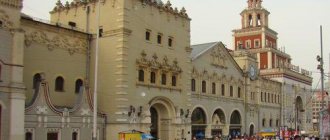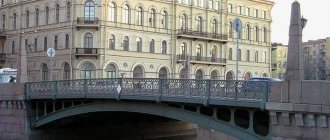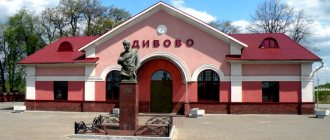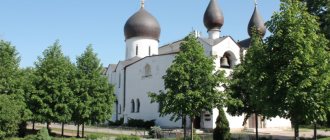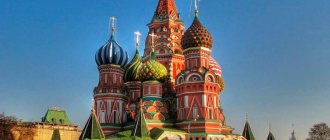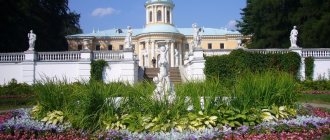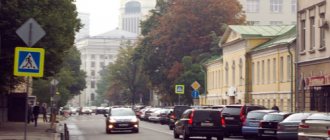In the early 1970s, Svyatoslav Richter and Nina Dorliak settled on the sixteenth floor of building 2/6 on Bolshaya Bronnaya Street, not far from the Conservatory. This house is a typical brick tower. But when you go upstairs and enter the apartment, you find yourself in a special world. No luxury, no fuss of things. The character and lifestyle of the owner, the special energy of a person whom Yuri Bashmet calls “a safe-conduct of truth in art” are felt in everything.
Memorial apartment of Svyatoslav Richter
In a large room, called the “hall” in the old days, Richter practiced alone or rehearsed with other musicians. There are two Steinway & Sons pianos, two antique Italian floor lamps donated by the mayor of Florence, a tapestry, and paintings. Auditions of operas or viewings of favorite films took place in the hall.
In the office, or, as Richter himself called this room, “the closet,” there are cabinets with books, records, and cassettes. The most valuable thing here is a cabinet with sheet music, on which the maestro’s notes have been preserved. There is also a wooden figurine of the Infant John the Baptist, this is a memory of the Musical Festivals organized by Richter in Touraine in France. On the wall there is a plaster counter-relief with the profile of Boris Pasternak from the monument in Peredelkino - like an imprint, a trace left by a person on the earth, an image wonderfully found by Sarah Lebedeva. Nearby hangs a small landscape of Saryan, a gift from Elena Sergeevna Bulgakova.
The secretary contains the manuscript of Sergei Prokofiev's Ninth Sonata, dedicated to Richter, a photograph of Heinrich Neuhaus, a drawing by Picasso, and Solzhenitsyn's "Little Girls". Such was Richter's social circle.
Memorial apartment of Svyatoslav Richter
The “Green Room” is a relaxation room; on concert days it turned into an artistic room. On the wall hangs a portrait of his father, Teofil Danilovich, an elegant, reserved man. He graduated from the Vienna Conservatory as a pianist and composer. Teofil Danilovich and Anna Pavlovna (Svyatoslav’s mother) were unable to leave Odessa in 1941, when Nazi troops were approaching the city. Teofil Danilovich was arrested and executed on the night of November 6–7 as a “German spy.” Anna Pavlovna went to Romania, and then to Germany, forever leaving Russia and her only son, who at that time was in Moscow and was also awaiting arrest. They met only 20 years later.
Svyatoslav Richter's artistic interests and passions were varied; he not only loved painting, but was also an artist himself. His pastels are displayed in a small room. In them Robert Falk o. In Nina Lvovna’s former kitchen there are photographs telling about the musician’s life.
The museum tries to preserve the musical and family traditions established by the owners of this hospitable house.
Memorial apartment of Svyatoslav Richter
Pre-registration is required before visiting by phone: (495) 695–83–46, (495) 697–47–05.
Notes
- ↑ 123
Memorial apartment of Svyatoslav Richter. Museums of Russia. Retrieved December 22, 2021. - ↑ 123
To the genius for a light. Where did the great Muscovites live and work? Arguments and facts (January 25, 2016). Retrieved December 22, 2021. - Musical tours will be held around the memorial apartment of Svyatoslav Richter. Moscow 24 (April 19, 2016). Retrieved December 23, 2021.
- State Museum of Fine Arts named after. A. S. Pushkin. RIA Novosti (May 31, 2012). Retrieved December 23, 2021.
- The Pushkin Museum opened exhibitions in virtual reality. Interfax (September 5, 2016). Retrieved December 23, 2021.
- ↑ 1 2 3 4 5 Ministry of Culture and Mass Communications of the Russian Federation, Pushkin Museum.
Memorial apartment of Svyatoslav Richter: guide. - M.: Artist and Book, 2004. - 48 p. - Music can be seen and captured on paper. Evening Moscow (February 1, 2016). Retrieved December 23, 2021.
- “Variations on a Theme of an Epoch” by Shostakovich and Richter is presented by the Pushkin Museum. RussiaK (November 9, 2016). Retrieved December 23, 2021.
- A new concert season will begin at the Svyatoslav Richter Memorial Apartment. Moscow 24 (January 26, 2017). Retrieved December 23, 2017.
- State Museum of Fine Arts named after A.S. Pushkin turns 105 years old. Russian tourism (May 23, 2017). Retrieved December 23, 2021.
- November exhibitions: cinema based on Paustovsky and another Kazimir Malevich. Russian newspaper (November 1, 2017). Retrieved December 23, 2021.
Concerts at the Svyatoslav Richter Memorial Apartment
Bolshaya Bronnaya, 2/b, apt. 58 (16th floor)
“English history of German music” December 9, 18:00
The concert program is dedicated to German and Austrian keyboard music of the 18th–19th centuries, which was inspired by English culture.
The program includes: Suite No. 5 in E major by G. F. Handel, English Suite No. 2 in A minor by J. S. Bach, Fantasy in F sharp minor (Op. 28) by F. Mendelssohn and Sonata in E flat major Hob. XVI/52 J. Haydn.
Performer: Pyotr Laul (piano) – laureate of international competitions, teacher at the St. Petersburg Conservatory; performs on tour in Russia and abroad with symphony orchestras under the baton of such conductors as V. Gergiev, N. Alekseev, V. Ziva, F. Korobov, T. Sokhiev, J.-K. Casadesus, M. Shostakovich. In 2021, P. Laul performed all 32 piano sonatas of L. van Beethoven in St. Petersburg and Moscow. Critics compare the universal repertoire and interpretation of the author's text by Petr Laul with the style of Svyatoslav Richter.
Klavierabend of the laureate of international competitions Elizaveta Leonskaya (Vienna) December 14, 19:00
The program includes: piano sonatas in C major KV 330, F major KV 332 and B flat major KV 333 by W. A. Mozart, Six little pieces for piano (op. 19) by A. Schoenberg, Variations (op. 27) for piano A Webern.
Performer: Elizaveta Leonskaya (piano) – student, friend and stage partner of Svyatoslav Richter. Together with E. Leonskaya, the maestro played and recorded sonatas by W. A. Mozart, arranged by E. Grieg for piano four hands.
“Rusquartet and Alexander Gindin wish you a Merry Christmas” The concert will take place in the exhibition space of the exhibition “The Years of Wanderings of Svyatoslav Richter. England - America." December 20, 19:00
The program includes: string quartets of Lera Auerbach (Russia/USA) and Jonathan Dove (England), rarely performed in Russia, and the Piano Quintet of the English classic Edward Elgar.
Performers: Honored Artist of Russia Alexander Gindin (piano), as well as the winner of many prestigious competitions, the string quartet “RUSQUARTET” will perform for the first time in the Svyatoslav Richter Memorial Apartment.
““B” like Britain” The premiere of the program The concert will take place in the exhibition space of the exhibition “The Years of Wanderings of Svyatoslav Richter. England - America." December 25, 19:00
The title of the program ““B” like Britain” plays on the letter “B”, which begins the names of the composers – Bax, Britten, Bone and Bennett – whose works will be performed in the concert.
Program: Arnold Bucks – Hardanger, The poisoned fountain, Moy Mell, The Devil that tempted St. Anthony (4 plays); Benjamin Britten – Mazurka elegiaca, Intro and rondo alla burlesca (op. 23); York Bowen – Theme and variations (op. 139); Richard Rodney Bennett – Divertimento for two pianos.
Performers: piano duet of Lyudmila Berlinskaya and Arthur Ansel.
Richter's apartment as “the highest cultural point in Moscow”
Museum-apartment of Svyatoslav Richter in Moscow.
STUPAK: Hello, the “Cultural Journey” program is on air. Polina Stupak and Marat Safarov are at the microphone. Marat, greetings.
SAFAROV: Greetings, Polina.
STUPAK: Our today's issue comes out on the eve of Catholic Christmas, and we decided to dedicate it to the outstanding, brilliant pianist Svyatoslav Teofilovich Richter. His name, of course, it seems to me, is known to every person. And when you hear him play, you admire and understand that this is really not just a game, this is a conversation with an instrument, you are transported to some other world, into space. And today we also have one more reason to remember Svyatoslav Teofilovich - these are the “December Evenings”, which are held annually at the Pushkin Museum of Fine Arts, and now they run until the 29th. I recommend all our listeners to go there, there are still tickets available. And today we will talk about the magnitude of Svyatoslav Teofilovich, about his muse and life partner and stage partner Nina Lvovna Dorliak, about Richter’s memorial museum-apartment and how the very idea of “December Evenings” was born. And I hasten to introduce our guests. This is the head of the department of musical culture of the Pushkin State Museum of Fine Arts, Yulia De-Klerk. Hello, Yulia Isaakovna.
DE-KLERK: Hello, hello.
STUPAK: And Nadya Ignatieva, a researcher at this museum. Hello, Nadya.
IGNATIEVA: Hello.
STUPAK: Thank you very much, dear guests, for agreeing to take part in our program. And we’ll probably start from the very beginning - let’s go back to the early 70s, at a time when Nina Lvovna and Svyatoslav Teofilovich became residents of an apartment in a building on Bolshaya Bronnaya, on the 16th floor. And even in those days this place was called a high point on the cultural map of Moscow.
DE-KLERK: I want to say a little about the house and in general about the problem with housing, which accompanied Richter, one might say, almost his entire life. It was such a somewhat tragic story, but nevertheless it cannot be said about it, because it was precisely the last apartment that Richter was very proud of. Because when he arrived in Moscow, he was absolutely homeless, and he lived with his professor Heinrich Gustavovich Neuhaus and with friends.
STUPAK: Slept under the piano.
DE-KLERK: Slept under the piano. And Anna Ivanovna Troyanovskaya, whose portrait actually opens our exhibition. And here you can name many people, including Vedernikov. That is, in general, before almost his first tour in America, Richter did not have his own apartment. And many, in general, great musicians and friends endlessly wrote letters asking for housing for the great pianist. This house was commissioned in 1968, and at that time it was absolutely elite housing.
STUPAK: Probably the tallest building in Moscow at that time, right?
DE-KLERK: Not the tallest building. The words you just quoted belong to Yuri Bashmet, who said that this apartment was the highest cultural point in Moscow. Because it really is the 16th floor, the tower, and it was famous, it stands at the intersection of Bolshaya and Malaya Bronnaya, and many, so to speak, famous people, actors lived there.
SAFAROV: Yes. We will remind our radio listeners about a special program in which we made a cultural trip to the house of Valentin Nikolaevich Pluchek.
DE-KLERK: Yes, neighbor.
SAFAROV: This year, in fact, anyone who wants to remember Valentin Nikolaevich and this house from a different angle can find this program on the website of our radio station Vesti FM. So this is a famous artistic house.
DE KLERK: Yes, the famous artistic house, Yuri Nikulin was also there, there were directors there.
SAFAROV: Goncharov.
DE-KLERK: Goncharov, absolutely right. The Lisitsan family lived there.
SAFAROV: Rufina Nifontova.
DE-KLERK: Exactly. The house was, so to speak, famous. And when it was rented out, it, of course, was, so to speak, an apartment, as they would say today, elite housing. ...
SAFAROV: Nadya, I remember, on the excursion we had a chance to go on, on your wonderful excursion, in a separate room there is a portrait of Theophilus Richter, and it is very revered, this room. What is it called, this room in the house?
IGNATIEVA: We often call it a bedroom, although Richter did not like to sleep there.
DE-KLERK: But it's actually a bedroom.
SAFAROV: But it is also artistic in some ways, he was preparing for concerts there.
IGNATIEVA: Yes, and we are now using it as an artistic one. Well, rather, it can even be called a rest room, because Richter often stayed in his room to sleep.
DE-KLERK: On the sofa, to which he placed a chair, like an absolute Spartan...
Listen in audio file!
